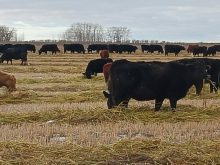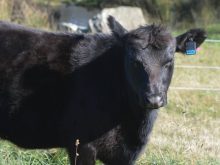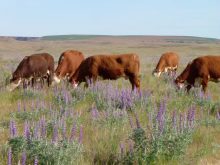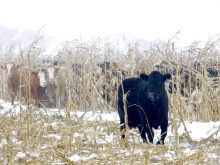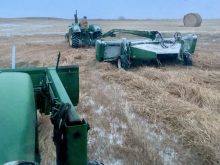Editor’s Note: Keep in mind seasons in Australia are reversed: spring — September to November; summer — December to February; autumn — March to May, and winter — June to August.
In my last article, I shared the trials of our swath-grazing attempts on our farm here in Australia compared to what we had done for many years up on 4-Clover Ranch near Rocky Mountain House, Alta. We felt the benefits of this cost-saving concept were worthwhile exploring in a season when we are hot and dry instead of feeding cattle in deep snow and cold temperatures in Canada.
Read Also

Harvest wraps up and fall work begins
At the Eppich famly ranch in western Saskatchewan, the fall harvest was successful with few breakdowns, cows and calves have been sorted and a new tractor has arrived
While it is hard for the Canadian reader to imagine, most livestock feeding happens during the summer here in Australia and it will still be in full swing mid-March. Our experience with bale grazing from 4-Clover Ranch, which has similar desired outcomes, gave us the encouragement to give that a go here.
We took in some cows and calves on custom grazing this year and have been running them separately from our own heifers. While the heifers are swath grazing, the cows are on some tall fescue we had cut and baled for hay in early November. We just have a small pasture of Fletcha tall fescue, seeded more for its deep root system and ability to tolerate wet winter conditions. We seeded it into a part of Alcheringa Pastoral, where earlier oat crops showed signs of compaction and poor infiltration. The tall fescue established very well and has certainly corrected the compaction issue, with roots seemingly penetrating down through the heavy clay. The other benefit of tall fescue is excellent resilience and good sod-forming ability. The negative is not unlike phalaris (a type of reed canary grass) where it also has tremendous growth in early spring but if allowed to head out, palatability declines rapidly.
I had tried to do a flail trim, mimicking skim grazing a year ago, but found it hard to get the cattle to graze below the dry, sharp stubble. So this year we made the decision to cut it for hay.
We have just started bale grazing the hay on fields where it was cut and are happy with the observations. We put the heifers through the tall fescue regrowth after haying, but there was a bit of grazing left which had the cows wandering outside the area where the bales were placed, giving good manure distribution. The dry ground is also hard preventing pugging (feed not getting tramped and worked into soft soil) and resulted in excellent utilization of the bales. We of course don’t have the challenges of the cattle wanting to lie down and spoil the hay as is common with cold and snow in Canada.
Bale grazing certainly has a place here, considering forage species that are compatible. The tall fescue paddock might be used for this in the future. Grazing during the hot Australian summer creates new challenges and demands a new approach for us against our Alberta experience. We feel some principles are shared and we are enjoying the journey.




